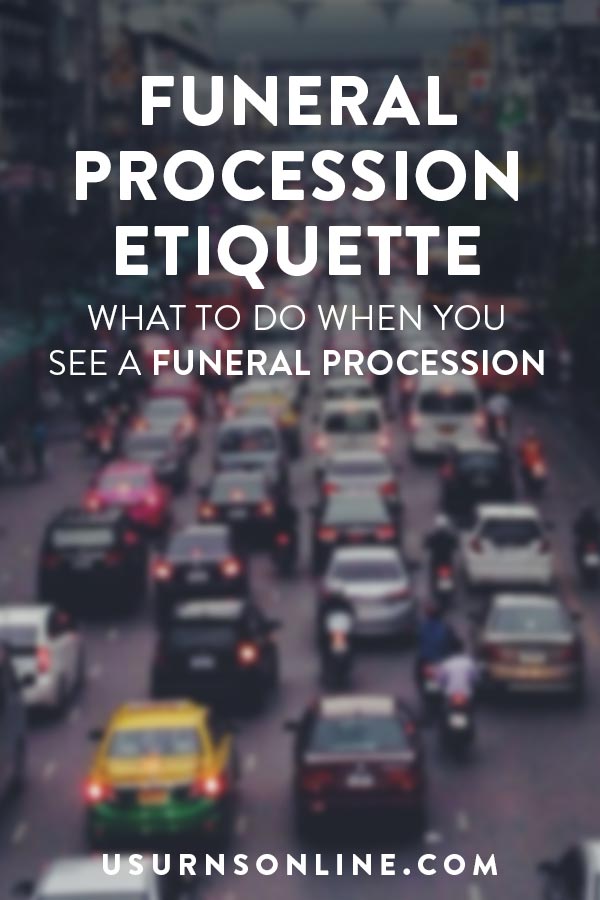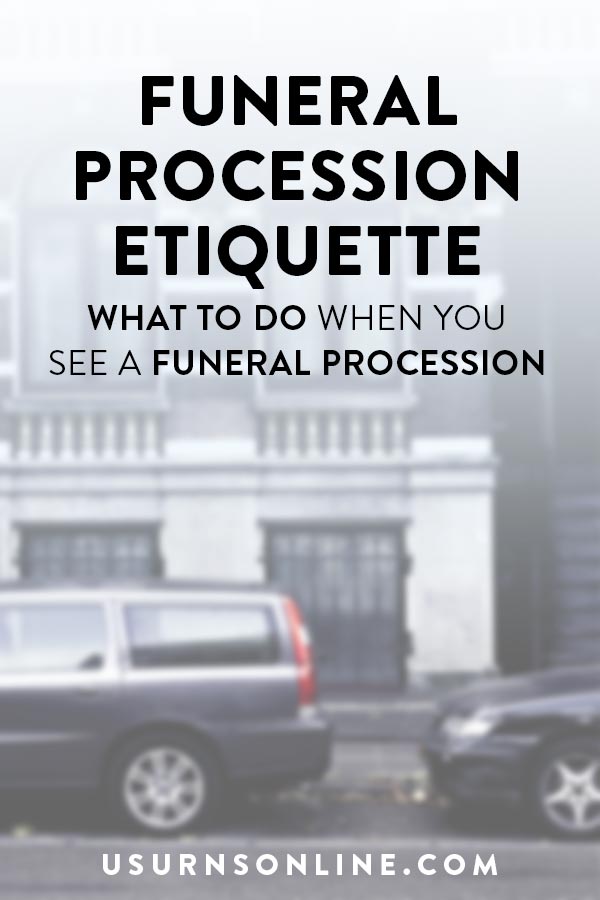Let’s talk about funeral procession etiquette.
What do you do when you see a funeral procession going down the street? Do you pull over? What if you’re walking down the street? Or, perhaps even more importantly, what if you’re in a funeral procession?
If you’ve wondered to yourself what the proper protocol is regarding funeral processions, we’re here to shed some light on any questions you may have.
Let’s begin.
Funeral Procession Etiquette for Cars
What do you do if you’re driving in a car and see a funeral procession?
Pull your vehicle to the side of the road and wait.
This is the answer to what is perhaps the most common question concerning funeral procession etiquette. No matter where you live, whether you’re in the city or the country, pulling over is a simple and respectful response.
Funeral Procession Etiquette for Pedestrians
What do you do if you are walking down the street and see a procession?
Stop walking and remove your hat if you’re wearing one.
Bowing your head prayerfully (as opposed to staring) is also a thoughtful response. This is good, old-fashioned advice for showing reverence during any occasion, really.
Urns Made in the USA
Funeral Procession Laws
Funeral procession laws in the U.S. vary from state to state.
For example, in Texas, there are no laws regarding funeral processions, although they traditionally have right-of-way at intersections. In Florida however, vehicles and pedestrians must yield right-of-way to funeral processions (unless they are emergency vehicles). And in Oregon, no car outside of the procession should merge into or join one.
To find out the laws in your state, click here.
And when in doubt, just pull over.
Funeral Procession Order
Funeral procession etiquette concerns not only passers-by but also the order of the procession itself.
Often, there is a lead vehicle (whether a funeral home vehicle, police car or motorcycle escort) followed by the hearse. A car carrying the deceased’s immediate family members will follow the hearse, which itself is followed by the rest of the cortege.
- Lead car
- Hearse (with the casket)
- Immediate family
- Other family
- Everyone else attending the funeral
In some smaller provinces, or in the case that the cemetery is on the grounds of the funeral home (or very nearby), the funeral director may actually lead the hearse on foot.
Funeral Procession Lights
Depending on the state, there may be laws concerning whether the lead vehicle in a funeral procession should have lights flashing.
Generally, all vehicles in the funeral procession should have their hazard lights on to distinguish themselves from other traffic.
Funeral Procession FAQ
Now let’s discuss some of the more frequently asked questions concerning funeral procession etiquette.
Are You Supposed to Pull Over for a Funeral Procession?
From a legal standpoint it depends on the laws of your particular state. But from a traditional standpoint, yes, you should pull over for a funeral procession. It’s a meaningful show of respect for the family as they are mourning the loss of a loved one.
Put yourself in the family’s shoes. Think about how you would feel if you were taking your family member to the cemetery. Would you care if other cars outside of the procession were being respectful to you and your family? Of course you would.
You would appreciate the ones who were showing reverence during your time of sorrow, and you may feel angry (and rightfully so) at those who didn’t care and cut you off.
No one in mourning should be made to feel that way, especially during a funeral procession. So do the right thing when you see one and pull over, even if you’re not legally obligated to.
Do You Have to Stop for a Funeral Procession?
Again, if you’re asking this question it’s a good idea to study your state’s laws concerning funeral processions. Your local funeral director with certainly know.
But yes, stopping for a funeral procession is customarily the proper thing to do.
In the case of an emergency, like your wife is in labor and you’re speeding to the hospital, only then do you probably have a valid excuse not to give way to the procession.
Can You Pass a Funeral Procession on the Highway?
Once more, it all boils down to state laws.
From a personal perspective, when my family was on our way to bury our grandfather after his funeral, we had to take the highway to get to the cemetery. Many people pulled over for us, but the nature of a highway is high speed and many simply weren’t able to.
The point is this: If you’re able to pull over safely on the highway for a funeral procession, or are legally required to, do it. If not, in the very least remain respectful. Don’t speed along ahead of the procession. And definitely don’t go cutting off any members of the procession just to make your exit. Take the next one.
What is a Funeral Cortege?
A funeral cortege is another word for funeral procession. It is all the members of the procession come together as one to take their loved one to their final place of rest.
We hope that you now have a little better understanding of funeral procession etiquette. If you liked this article, we think you may find this one on funeral etiquette interesting as well.
Pin It





